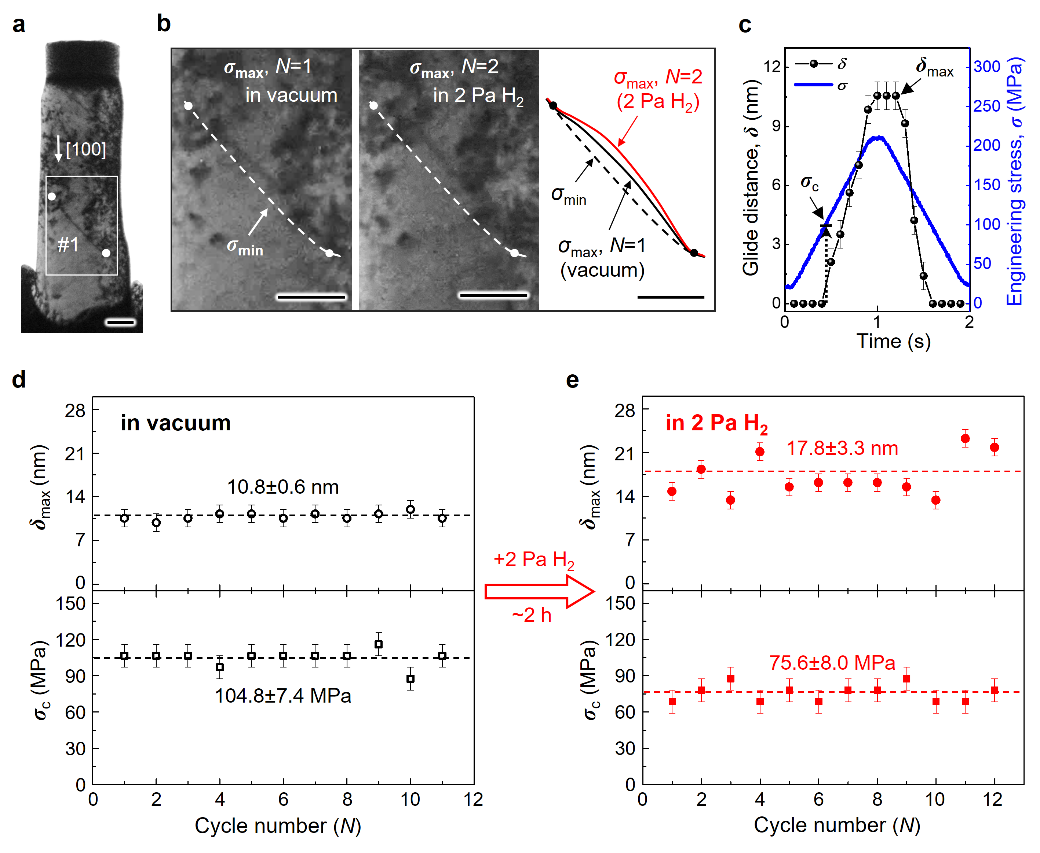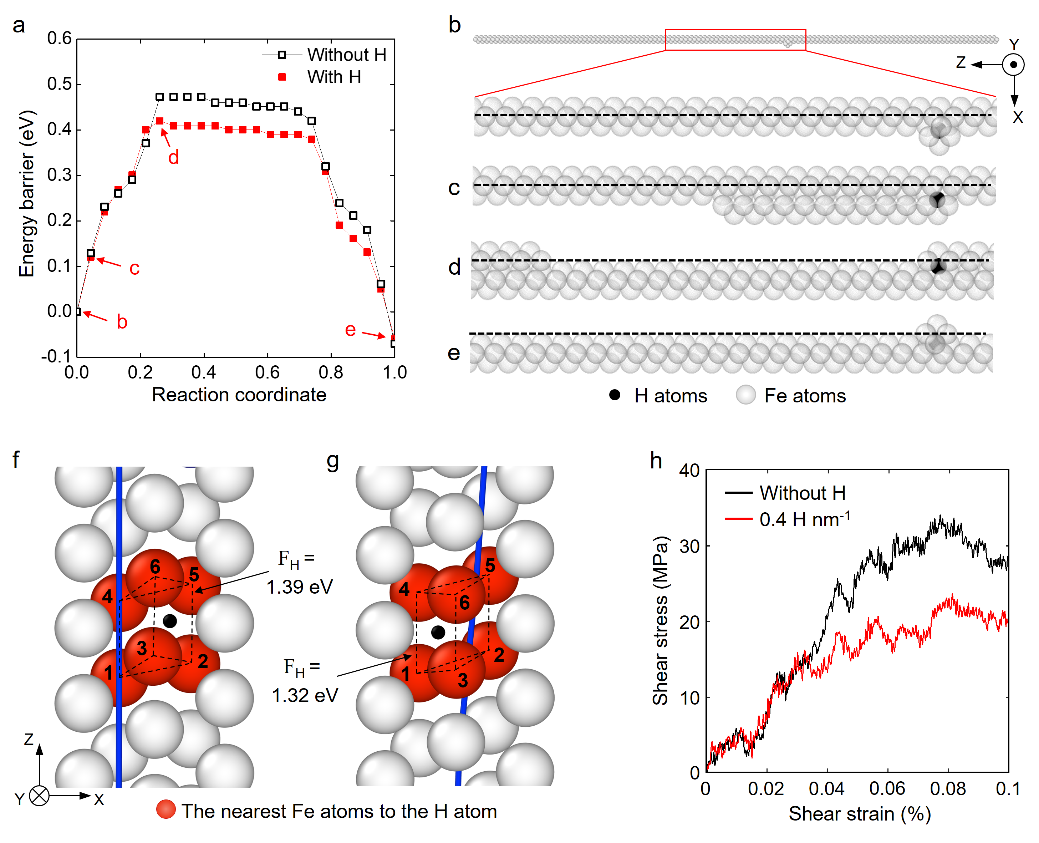Research Progress | Quantitative Tests Revealing Hydrogen-enhanced Dislocation Motion in Alpha-iron
Date:2023-04-28 Source: Dengke Chen Reading: 778
A compelling experimental evidence of hydrogen-enhanced screw dislocation motion in alpha-iron was found through quantitative in-situ ETEM tests. The research findings were recently published in Nature Materials. The co-first author of this paper is Dengke Chen, an associate professor in School of Naval Architecture, Ocean and Civil Engineering. Associate Professor Degang Xie and Professor Zhiwei Shan from Xi'an Jiaotong University are the co-corresponding authors. Dr. Longchao Huang from Xi'an Jiaotong University is another co-first author of the paper. Professor En Ma and Professor Suzhi Li from Xi'an Jiaotong University, Professor Ju Li and Dr. Yin Zhang from Massachusetts Institute of Technology, Professor Zhu Ting from Georgia Institute of Technology, and Prof. Dierk Raabe from Germany's Max-Planck-Institut für Eisenforschung also participated in the work. This research was supported by National Natural Science Foundation of China, Shanghai Pujiang Program and Shaanxi Postdoctoral Science Foundation.
In a hydrogen-based economy, the use of steels, which consist mainly of iron and often serve vital roles in power plants, vehicles, buildings or critical infrastructures, is at risk owing to hydrogen embrittlement—a sudden and often catastrophic deterioration of the material’s load-bearing capacity. Although multiple hydrogen embrittlement mechanisms have been proposed, a consensus has yet to be reached on the effects of these embrittlement modes. Also, direct experimental proof of the influence of hydrogen at the single dislocation level is missing.
In this article, the researchers designed a fully quantitative in situ ETEM mechanical testing protocol, as illustrated in Fig. 1, that enables the observation and comparison of bow-out motion of the same dislocation segments under a vacuum and in a hydrogen-containing environment.

Fig 1. Schematic of the experimental set-up for revealing the effect of hydrogen on the dislocation motion.
They found that the critical stress for initiating the dislocation motion in a 2 Pa electron-beam-excited Hydrogen atmosphere was 27–43% lower than that in a vacuum environment, proving that hydrogen enhances screw dislocation motion, as illustrated in Fig. 2.

Fig 2. Effect of hydrogenation on the bow-out motion of a screw dislocation
The hydrogen-induced decrease of dislocation activation stress in the experiment is consistent with the decrease of kink-pair nucleation barrier caused by hydrogen in atomistic simulation, as illustrated in Fig. 3.

Fig 3. Atomistic mechanism of hydrogen-enhanced screw dislocation glide.
These results indicate that the hydrogen effect on kink-pair nucleation could be the underlying mechanism of enhanced dislocation motion when the dislocation line is almost straight. This research achievement on the interaction of hydrogen and dislocations at the atomic scale is a solid step forward in solving the ancient problem of hydrogen embrittlement.
Paper link: https://www.nature.com/articles/s41563-023-01537-w




